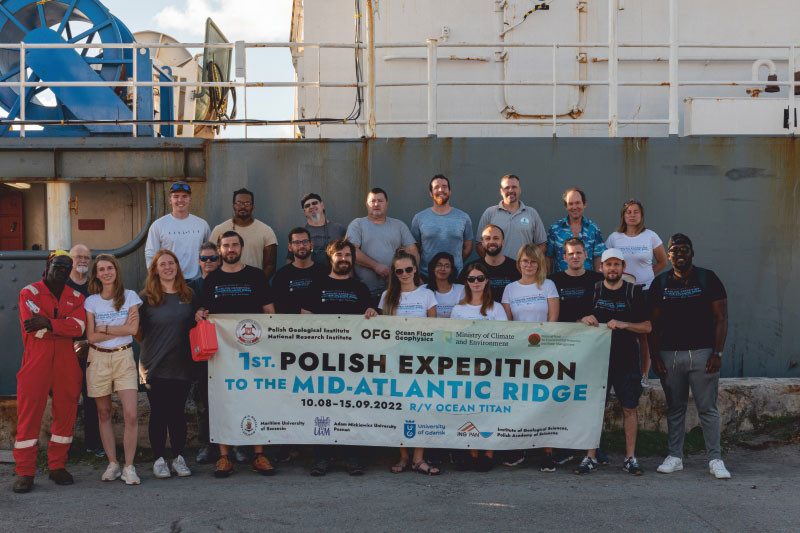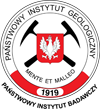AFRICA
As a member of the European Union, Poland participates in several research and educational programs in Africa. One of the most significant programs - PanAfGeo educational program - was started in the 2016. Its first phase was coordinated by PGI-NRI. The second phase will end in 2024, but preparations for PanAfGeo Plus already have started. So far, in the original program, 1576 geologists from national geological surveys of 49 African countries have participated. European geologists serve as tutors in the program, but at the same time, they learn first-hand about the cultural and environmental conditions their African co-workers are confronted with. The program also aims to develop and strengthen the economic relations between African and European countries, bringing benefits to both sides.
Polish geologists actively participated in geological surveys in many African regions. In Algeria, they were searching for copper, manganese, sulphur and iron ores, as well as, coal and oil. In Libya, they were researching resources for construction and chemical industries. The program also included water chemistry analyses and geophysical surveys. Polish specialists were also working in Mauritania, Nigeria and Zambia.
During their work, scientists faced many challenges. In the Saharan desert, they were fighting freezing nights and midday heat up to 50°C. In jungles, they had to hack their way through the dense vegetation only to find the path overgrown again during the next visit. Fortunately, Polish geologists had the help of the local people, who were well accustomed to the harshness of the environment.
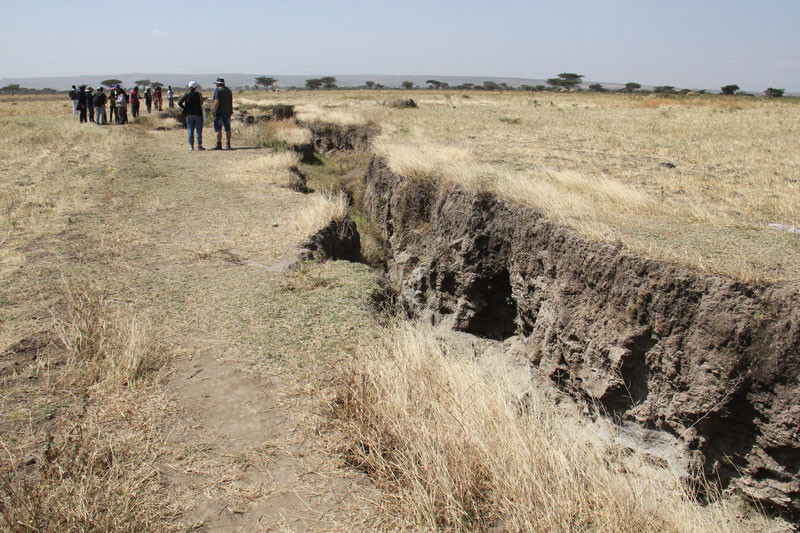
AUSTRALIA
From a Polish perspective, it's hard to imagine a more distant continent than Australia. Nonetheless, Polish explorers reached this far-away land already in 1839. One name stands above all: Paweł Edmund Strzelecki. He was an adventurer and researcher, exploring mostly the areas of New South Wales and Tasmania. It was he who named the Kosciuszko Mountain after one of Poland's most prominent freedom fighters.
Strzelecki was the author of the first geological map of the New South Wales and Tasmania. This impressive work has been published in a monumental work titled 'Physical Description of New South Wales and Van Diemen's Land'. The map had dimensions of 7,6 x 1,5 m and it shows an area of 400 thousand km2! Strzelecki described many living and extinct animal species of Australia and his work was known by the famous scientists of the time, like Charles Darwin, who praised the Polish researcher. He was rewarded by Queen Victoria with a noble title and granted the orders of the British Empire and the orders of St. Michael and St. George.
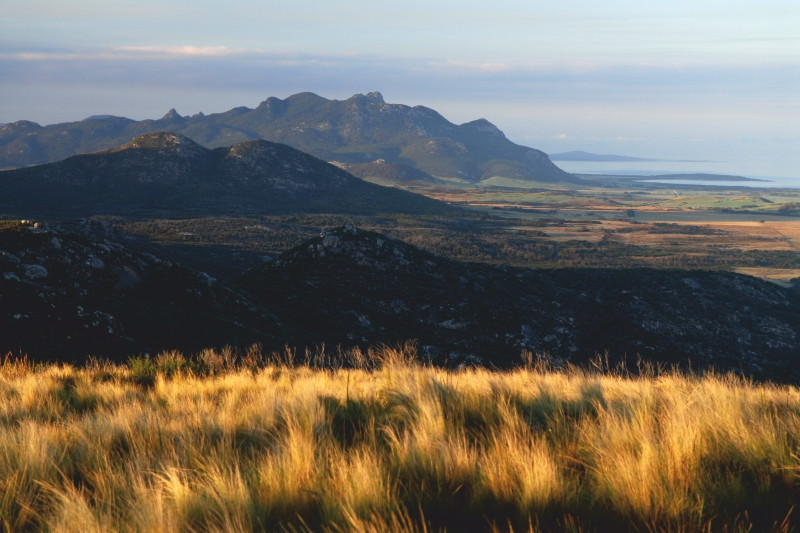
ASIA
The most famous scientific expeditions of Polish researchers in Asia are no doubt those to Mongolia in search of dinosaurs and primitive fossil mammals (1963-1971). However, Polish scientists have been visiting Asia long before, even though many of the 19th century visits were highly influenced by the forced relocations of Poles from their homeland to Siberia during Russian Empire’s occupation. This was the case of Aleksander Piotr Czekanowski, who was searching for coal and gold deposits in the area of Irkutsk and northern Siberia.
In more recent times, and quite voluntarily, Polish researchers have been working in many regions of Asia, including Vietnam, China, India, North Korea, Pakistan, Afghanistan, Kuwait and Iraq. Those expeditions were aimed mainly at the prospecting and mapping of resources, such as oil, ores, water, and others.
Mongolia
The Polish-Mongolian expeditions to the Gobi Desert took place between 1963 and 1971 and were led by the Polish Academy of Sciences. They resulted in many marvellous fossils, including the almost complete skeleton of Tarbosaurus, a cousin of the American Tyrannosaurus. It was discovered in 1964 by Gwidon Jakubowski. Scientists were also interested in the fossil of other reptiles, mammals and even insects. This was the golden age of Polish palaeontology.
While less famous, geological and prospecting expeditions to Gobi were organised as well, many of them led by PGI-NRI. During their stay in Mongolia, Polish geologists were mapping the area and searching for mineral ores and other resources. Cooperation between PGI-NRI and the National Geological Service of Mongolia lasts to this day. Current research concentrates on the most crucial resources, such as molybdenum and tungsten.
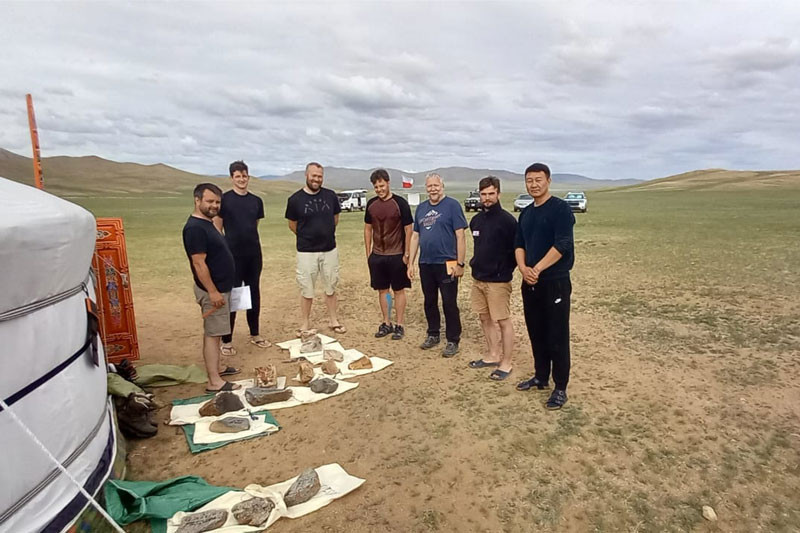
NORTH AMERICA
North America is well known for its dinosaurs. Many of the well-known palaeontologists hail from the USA. However, Polish scientists also made their mark in the palaeontology of American dinosaurs. We should mention Gerard Gierliński who is a worldwide famous specialist on trace fossils. He started his work in the USA as a PhD student, but later he continued it as a representative of PGI-NRI. Gerard Gierliński worked mainly in Utah, Wyoming and Colorado. His first spectacular discovery was the imprint of the belly of a dinosaur - one of the first discoveries confirming those ancient reptiles had feathers. Later fame came with the subsequent discoveries of whole track lines of many different dinosaurs. In one such place, near Moab (Utah), a museum has been built where visitors can observe the tracks. The said museum, Tracks Museum, entered a partnership program with PGI-NRI in 2014.
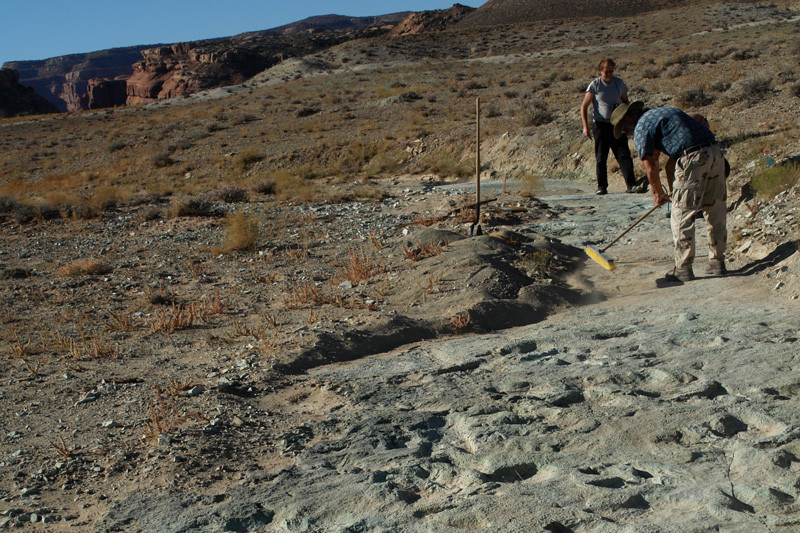
CENTRAL AMERICA
Polish geologists participated in research programs on Cuba in the 70s and 80s of the 20th century. They were responsible for the geological survey of two provinces: Pinar del Rio and Matanzas. Each scientist was assigned to a specific area and had the assistance of a Kuban geologist and a car driver. The work was not always easy. On open fields, researchers were under the threat of local livestock, which wasn't especially tolerant of strangers. Even more aggressive were the ticks. Sometimes geologists had to traverse through dense jungles in hot and humid conditions. However, the hard work paid off, and thanks to Polish researchers, the complex tectonics and stratigraphy of the Sierra de los Organo and Sierra del Rosario have been revealed. Together with the description of Jurassic and Cretaceous Ammonites, it increased our understanding of the early days of the Atlantic Ocean.
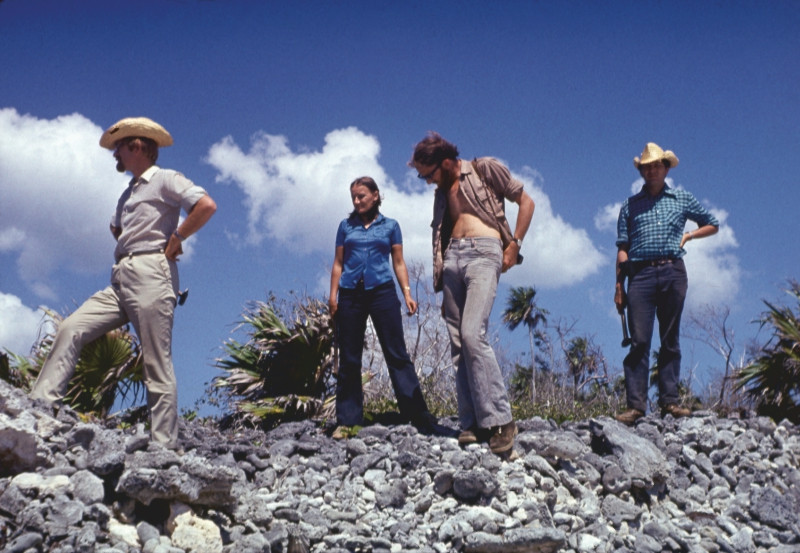
SOUTH AMERICA
Polish scientists started working in South America already in the 19th century. Among them were both geologists, as well as travellers and adventurers. One of the most prominent individuals was Ignacy Domeyko, who gained fame working in Chile between 1838 and 1889. Domeyko collected a sizeable collection of rocks and minerals and became a rector of the Universidad de Chile in Santiago. Domeyko, less known in his homeland, is a figure of great importance in the history of Chile. Many geographical areas, minerals and fossils have been named to honour the Polish geologist.
The other 19th century Polish adventurer and scientist was Edmund Strzelecki, who worked in Peru. In the 20th century, Polish researchers were especially active in the 60s and 70s. They were surveying the geological formations of Venezuela, Ecuador and Brazil in search of gems, metallic ores, and other resources. Their influence on the development of South American industry was noticeable.
Work conditions in South America were not easy. High in the Andes Mountains, they often had to use oxygen tanks, due to the reduction of oxygen in the air at 4000 m a.m.s.l. In the tropical forests, they were confronted with wet seasons, with humidity reaching up to 90%. Dense tropical vegetation made traversing the research area a long and tiring process, not to mention the danger of venomous animals living in the foliage. Things were getting worse due to the high expectations of local officials, who were pressing Polish scientists for the results. Despite those problems, the expeditions of Polish geologists were quite fruitful.
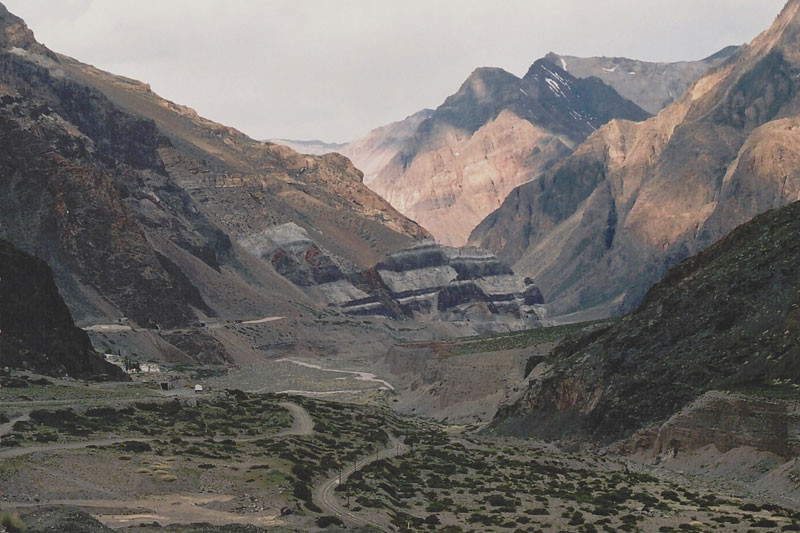
ANTARCTIC
The first truly scientific expedition Poles participated in was the cruise of the Belgica ship (1897-1899) with Henryk Arctowski and Antoni Dobrowolski on board. Arctowski was a geographer, geologist, geophysicist, glaciologist and meteorologist. As one of the first, he suggested the Antarctic Peninsula to be a prolongation of the South American Andes Mountains. In recognition of Arctowski's achievements, the Polish all-year round research station opened in 1977 on King George Island was named after him. The Arctowski Station is a centre of operation for most research programs involving Polish scientists on Antarctica.
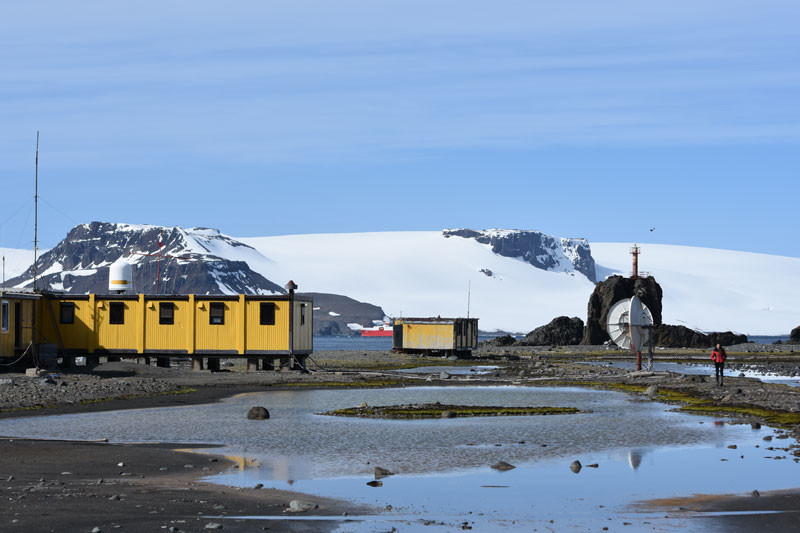
ARCTIC
Polish research in the northern polar regions started in the 2nd half of the 19th century. Among known scientists, we should mention such figures as Leon Hryniewiecki, Jan Czerski or Aleksander Kosiba, as well as Józef Morozewicz, one of the founders of the Polish Geological Institute.
The regular presence of Polish scientists in the Svalbard Archipelago began in 1932, and it has continued to this day. The first all-year round station on Spitsbergen was established in 1957 by the Institute of Geophysics of the Polish Academy of Sciences. There are also a few summer bases founded by different Polish institutions.
Due to harsh conditions, most people and supplies transportation takes place by sea and then by land. In the past, there was limited access to modern technology, hence, it wasn't uncommon to pull equipment with the strength of one's own muscles and wooden rollers. This was especially true during the rebuilding of the Hornsund station (1978-1979). Before the station was finished, the researchers slept in tents. Now, the Spitzbergen-Hornsund Station is a modern research centre, with not only spectacular scientific labs but also accommodating conditions for the crew.
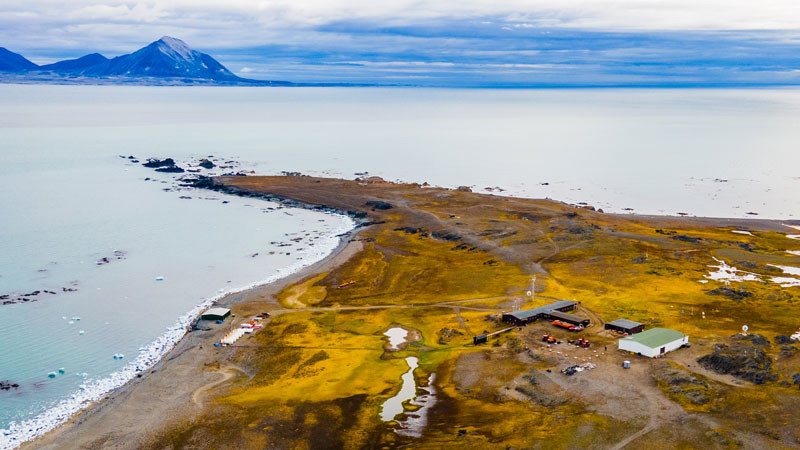
OCEANS
Oceans cover an area of about 260 million km2, but only 10% of it (consisting mostly of coastal regions) is considered to be properly studied. Due to logistical and technological problems, scientific research of the deep oceans is a big challenge.
Nonetheless, the Polish Geological Institute-National Research Institute is actively engaged in the research of metallic ores in the Pacific Ocean and massive sulphides at the bottom of the Atlantic Ocean.
Scientists must reach sediments at depths of about 3000 meters. To do this, they need to overcome water pressure reaching 300 –400 atmospheres. Only specialized equipment can survive such conditions, such as Miniature Autonomous Plume Recorders (MAPR). This device is used for the detection of hydrothermal anomalies. Living at sea is not easy by itself. Researchers must face such difficulties as bad weather or food shortages.
